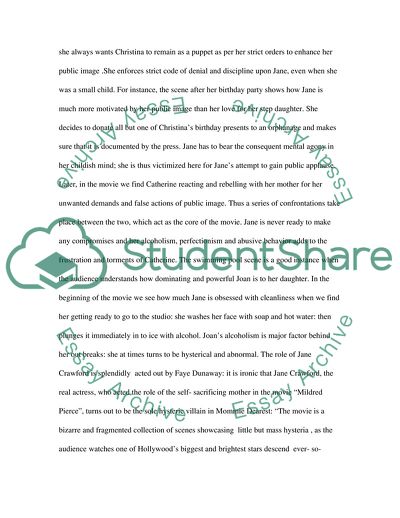Cite this document
(Mommie Dearest Movie Review Example | Topics and Well Written Essays - 2000 words - 1, n.d.)
Mommie Dearest Movie Review Example | Topics and Well Written Essays - 2000 words - 1. https://studentshare.org/visual-arts-film-studies/1707189-argumentative-essay
Mommie Dearest Movie Review Example | Topics and Well Written Essays - 2000 words - 1. https://studentshare.org/visual-arts-film-studies/1707189-argumentative-essay
(Mommie Dearest Movie Review Example | Topics and Well Written Essays - 2000 Words - 1)
Mommie Dearest Movie Review Example | Topics and Well Written Essays - 2000 Words - 1. https://studentshare.org/visual-arts-film-studies/1707189-argumentative-essay.
Mommie Dearest Movie Review Example | Topics and Well Written Essays - 2000 Words - 1. https://studentshare.org/visual-arts-film-studies/1707189-argumentative-essay.
“Mommie Dearest Movie Review Example | Topics and Well Written Essays - 2000 Words - 1”. https://studentshare.org/visual-arts-film-studies/1707189-argumentative-essay.


